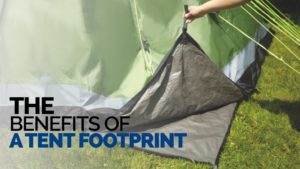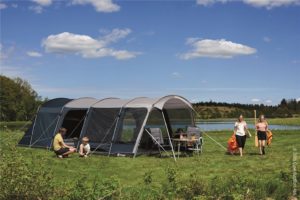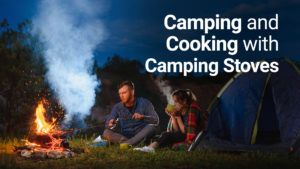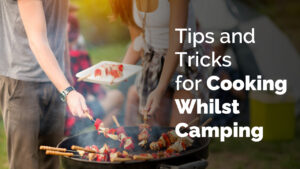
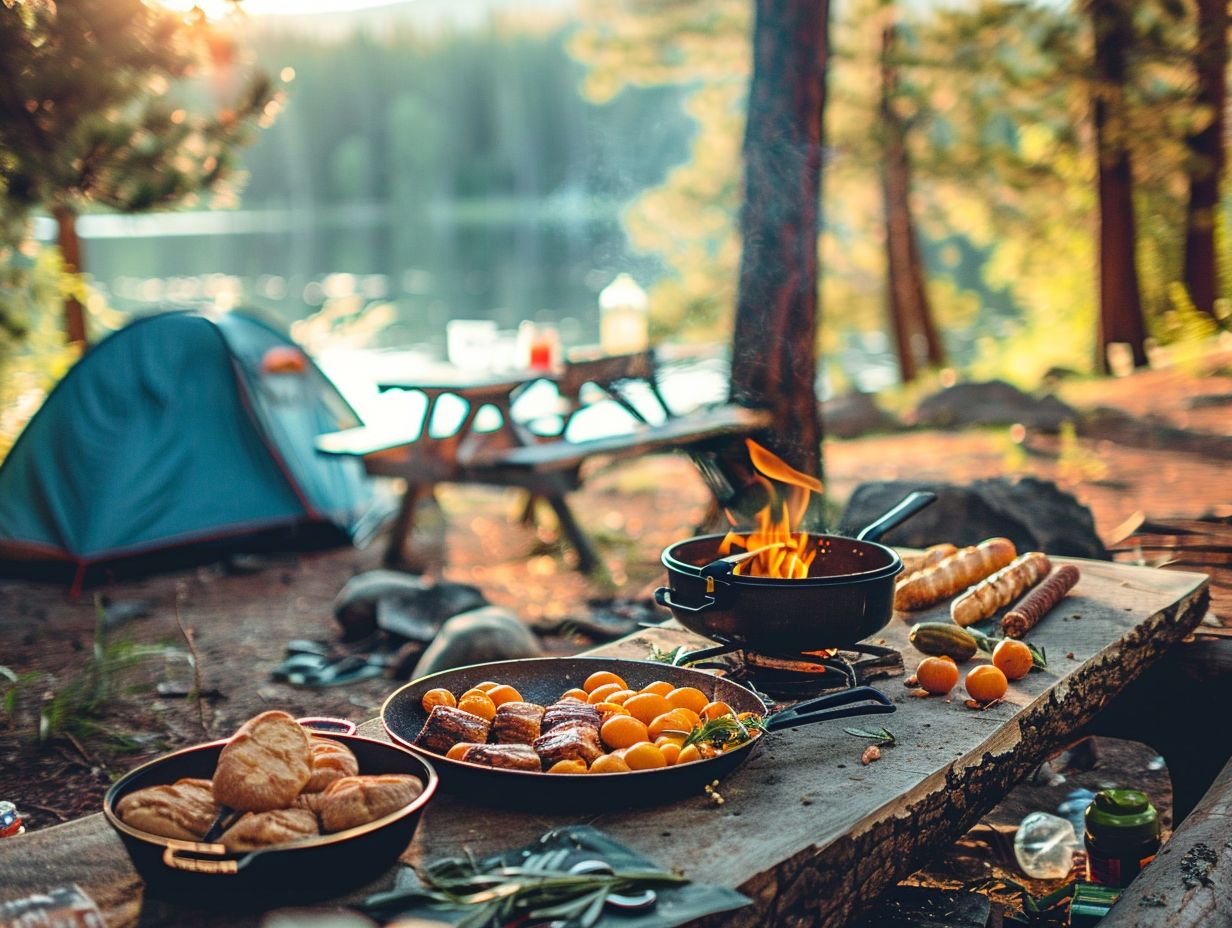
Vaibhav
- Categories: Advice
Are you planning a camping trip and wondering how to properly store your food to avoid any unwanted mishaps?
We will discuss the top 10 best practices for food storage at a campsite. From using airtight containers to keeping food away from animals, we have got you covered with all the essential tips.
We will also explore the risks of improper food storage, such as attracting animals and insects, spoiling food, and increasing the risk of foodborne illnesses.
Learn how to keep your food safe and your camping experience enjoyable.
Key Takeaways:

- Use airtight containers or coolers to prevent animals and insects from getting to your food.
- Proper food storage at a campsite reduces the risk of food poisoning and foodborne illnesses.
- Keep food away from heat sources and store raw meat separately from cooked food to prevent accidents and injuries.
What Are the Best Practices for Food Storage at a Campsite?
When preparing for a camping excursion, understanding the optimal procedures for food storage is essential. This knowledge guarantees the preservation of provisions, the safety of meals for consumption, and the reduction of wildlife interactions. These elements collectively enhance the overall experience of safety and enjoyment in the natural environment.
1. Use Airtight Containers or Coolers
Utilising airtight containers or coolers is considered one of the most efficacious food storage methods to preserve the freshness and safety of camping provisions. By encasing food within airtight containers or coolers, a protective barrier is established that aids in the preservation of perishable items over an extended period.
This practice is particularly imperative in camping or travel scenarios, as it guarantees the integrity of meals by shielding them from contaminants and sustaining their taste and quality.
Renowned for its dependable equipment, KÜHL offers an array of airtight containers and coolers engineered to endure outdoor environments, thereby ensuring the security and freshness of food items throughout one’s adventures.
2. Keep Food Away from Animals
It is imperative to keep food away from animals to ensure safety, both for yourself and the wildlife in the vicinity of your campsite. One highly effective approach to deter animals from being drawn to your food is to utilise airtight containers that seal in odours, thereby making it challenging for animals to detect the scent.
Additionally, it is crucial to store food in secure locations, such as a bear-proof food storage container or a suspended bear bag, situated away from areas where meals are prepared and sleeping quarters. Maintaining a hygienic campsite and correctly disposing of food scraps can further diminish the likelihood of attracting undesired wildlife to your camping area.
3. Store Food in a Bear-Proof Container
The use of bear-proof containers for storing food is essential when camping in bear-inhabited regions as a precautionary measure against potential wildlife encounters.
These containers are intentionally designed to withstand the strength and persistence of bears, making it extremely difficult for them to access the contents enclosed within. By using bear-proof containers, campers can not only protect their own safety but also conserve the well-being of the bears themselves.
This practice is highly recommended in camping food guidelines for areas where bears are common, as it helps reduce human-bear conflicts and promote responsible outdoor behaviours. Additionally, ensuring food is properly secured in bear-proof containers helps preserve the natural behaviour of bears by discouraging them from linking humans with a convenient food source.
4. Hang Food from a Tree
Using bear bags or bear canisters to suspend food from a tree is a traditional and effective practice for food storage in wilderness environments. This method involves hanging food supplies at a height above the ground and away from the tree’s trunk to deter bears and other wildlife from accessing it.
By using bear bags made from strong materials or bear canisters designed to withstand animal pressure, one can safely store provisions. Not only does this method protect food from being eaten by wildlife, but it also helps to reduce human-wildlife conflicts, thus enhancing a safer camping experience in remote areas.
5. Keep Food Away from Heat Sources
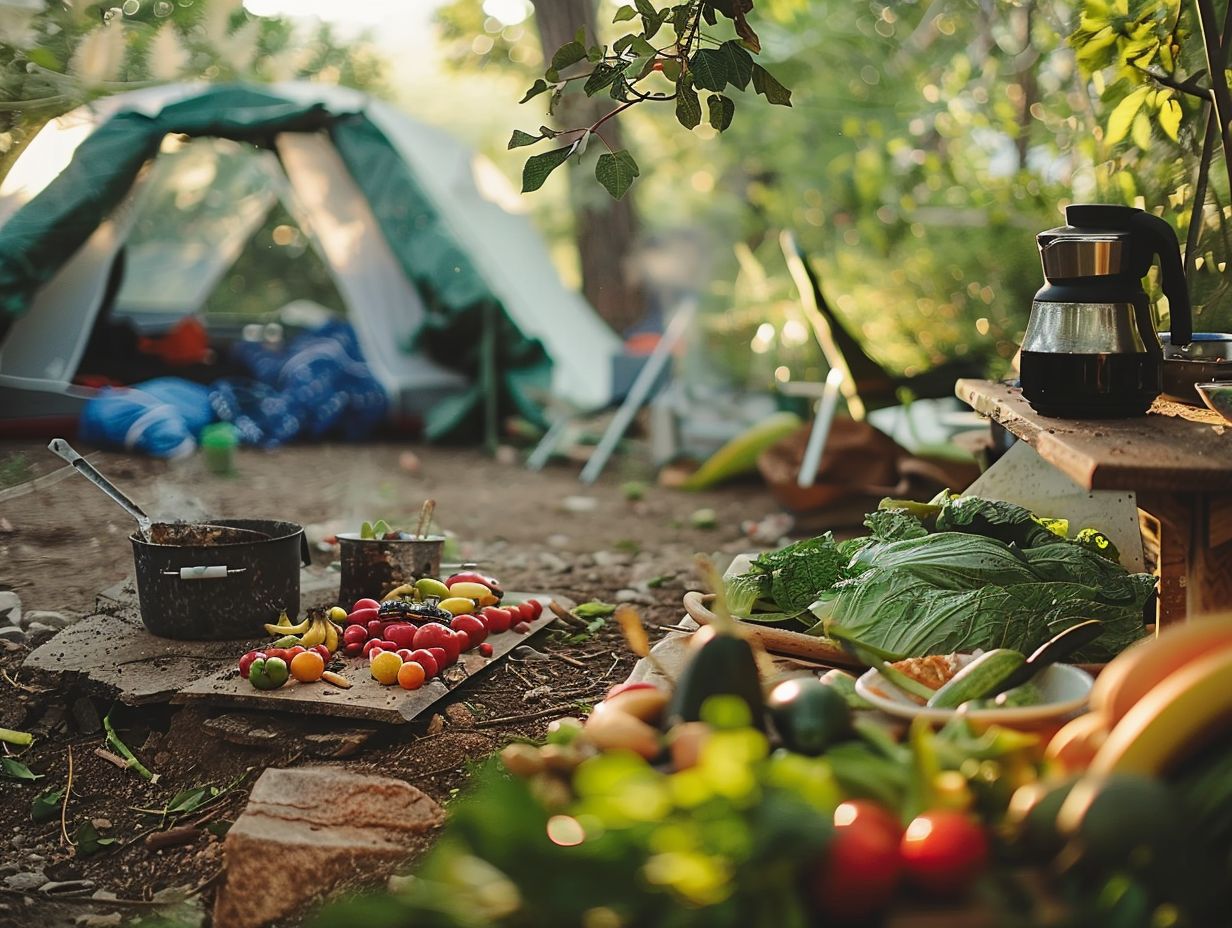
It is crucial to maintain the quality of food and prevent spoilage by keeping it away from heat sources, particularly when using cooking equipment at a campsite. Placing food in close proximity to heat sources not only hastens its deterioration but also presents a fire hazard, which can be especially perilous in a camping setting.
To guarantee the safety of your provisions, it is advisable to store them in a cool box or a designated food storage area that is distant from any open flames or hot surfaces. Regular monitoring of the temperature in the storage area is recommended to ensure that it remains within the safe range for food storage.
Adhering to these precautions will allow you to enjoy your meals while minimising the potential risks associated with improper food storage near heat sources.
6. Store Raw Meat and Cooked Food Separately
Ensuring the separation of raw meat and cooked food is essential to prevent cross-contamination and maintain food safety standards during camping meals.
Introducing differentiation within a cool box can significantly reduce the risk of bacteria from raw meat contaminating foods that are ready-to-eat. Using separate containers or compartments within the cool box is vital to reduce the potential health risks associated with mixing these items.
Failing to follow this practice can lead to foodborne illnesses such as salmonella or E. coli, which can cause severe gastrointestinal discomfort, vomiting, and in serious cases, require hospital treatment.
By carefully keeping raw meats isolated from other food items, individuals can enjoy their camping trip without worrying about getting sick due to improper food handling.
7. Use a Thermometer to Monitor Food Temperature
The utilisation of a thermometer for monitoring the temperature of food stored in a chiller is essential to ensure the safety of consumables. Various categories of food require specific temperature settings to prevent the growth of bacteria and maintain their freshness intact.
For example, perishable items such as meat and dairy products should be kept below 40°F (4°C) to prevent spoiling. Conversely, hot foods should be kept above 140°F (60°C) to stop the spread of harmful bacteria.
When using a food thermometer, it is important to insert it into the thickest part of the food item to get an accurate measurement. Regularly calibrating the thermometer is vital to maintain its accuracy, allowing for reliable monitoring of food temperatures.
8. Keep Food Out of Direct Sunlight
It is imperative to keep food out of direct sunlight in order to uphold its freshness and prevent spoilage.
Storing food products in shaded areas plays a crucial role in preserving their quality by shielding them from the detrimental effects of UV rays. Exposure to UV rays can lead to nutrient degradation and chemical changes in items such as dairy products, grains, and certain fruits.
In the case of products like olive oil and spices, sunlight exposure can hasten the onset of rancidity, thus impacting both taste and aroma.
Furthermore, proper storage of perishable goods such as meat and dairy items in cool, shaded environments can prolong their shelf life and mitigate the risk of bacterial proliferation. Adherence to appropriate storage protocols safeguards the color, flavor, and overall integrity of food items, rendering them safe for consumption over an extended period.
9. Store Food in a Clean and Dry Area
The maintenance of food quality and prevention of contamination can be achieved by storing food in a clean and dry area. An effective method to ensure this is through the implementation of sound organisational strategies in food storage areas.
Utilising a camping food organiser allows for the orderly arrangement of items, monitoring of expiry dates, and optimisation of storage space. This not only improves ingredient retrieval efficiency but also fosters better hygiene practices.
Furthermore, regular cleaning and disinfection of storage containers and shelves serve as a deterrent against pests and moulds. The establishment of a well-organised and hygienic food storage system is crucial for promoting a healthy and seamless culinary experience.
10. Keep a List of Stored Food and Expiration Dates
Maintaining a record of stored food items along with their respective expiry dates can aid in the effective management of provisions and mitigate wastage.
Systematising your inventory not only facilitates convenient access but also minimises the likelihood of acquiring items that are already in your possession but may have escaped your memory.
The utilisation of transparent plastic containers enables visibility into the contents without necessitating the opening of each container, thereby optimising time efficiency and decreasing the possibility of oversight.
Furthermore, labelling these containers enhances operational efficiency by ensuring precise identification and categorisation of items, thereby simplifying meal planning and grocery shopping processes.
What Are the Risks of Improper Food Storage at a Campsite?
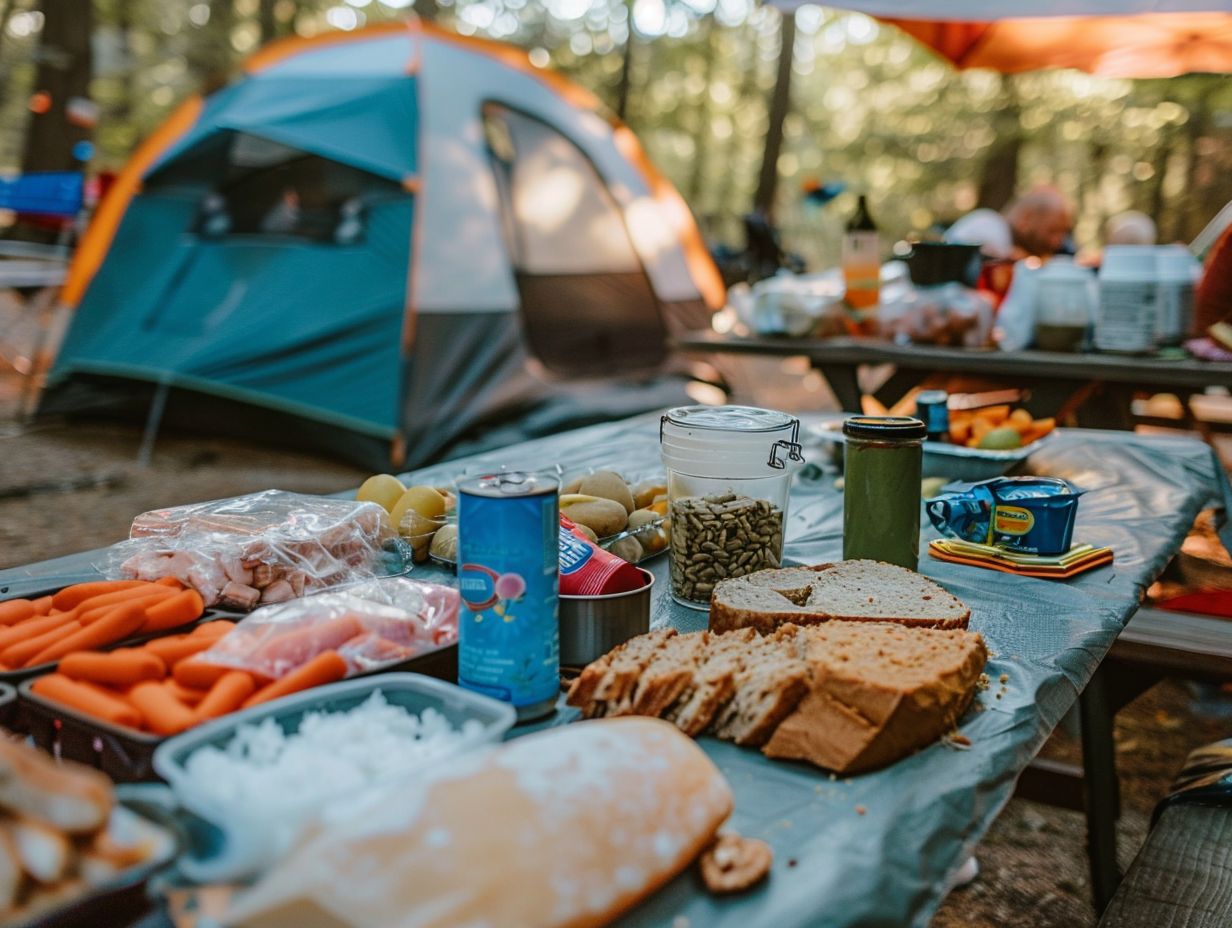
It is imperative to understand the dangers associated with improper food storage while at a campsite in order to reduce the risk of attracting wildlife, food spoilage, and potential health hazards like food poisoning.
1. Attracts Animals and Insects
Inadequate food storage practices can attract animals and insects, resulting in unwanted wildlife interactions at campsites. Such animals and insects pose various risks when frequenting human campsites, including the potential hazards of disease transmission and property damage.
Improperly stored food not only entices these creatures but also disrupts the natural ecosystem by influencing the behaviour of local wildlife. Furthermore, the presence of animals scavenging around campsites can create unsafe conditions for both campers and the animals themselves.
Therefore, it is imperative to adhere to proper food storage protocols to mitigate these undesired encounters and uphold a secure camping environment for all individuals involved.
2. Spoils Food and Causes Food Poisoning
Inadequate food storage practices can result in the spoiling of both perishable and non-perishable items, thereby heightening the risk of foodborne illnesses. When food items are inadequately stored, they become vulnerable to contamination by harmful bacteria and microorganisms.
Perishable items, such as dairy products and meats, are particularly susceptible to spoilage in the absence of refrigeration, leading to bacterial proliferation and the production of toxins capable of causing foodborne illnesses.
Likewise, non-perishable goods like tinned items can also be compromised if stored in environments with high humidity or excessive heat, potentially fostering the proliferation of botulism-causing bacteria.
To mitigate these risks, strict adherence to recommended storage protocols is imperative. This includes maintaining appropriate temperatures, employing airtight containers, and systematically rotating food items within both pantry and refrigeration storage spaces.
3. Creates a Mess and Attracts Unwanted Pests
Poorly stored food can lead to untidiness and attract unwelcome pests, detracting from the enjoyment of your camping outing. Food scraps scattered around the campsite can act as a lure for insects and animals seeking an effortless meal.
This situation not only disrupts the tranquillity of your outdoor retreat but also presents health risks, as certain pests may carry diseases.
To ensure a camping experience that is both agreeable and safe, it is imperative to appropriately dispose of all food remnants in designated waste receptacles or containers. Maintaining cleanliness at the campsite serves to not only preserve the natural allure of the surroundings but also aids in preventing wildlife from developing a reliance on human food sources.
4. Increases the Risk of Foodborne Illnesses
The likelihood of foodborne illnesses rises when food is stored inadequately, particularly perishable items that necessitate specific temperature conditions.
Improper storage practices can result in various types of foodborne illnesses, including bacterial contamination that can lead to ailments such as salmonella or E. coli. Mold growth on food due to inadequate humidity levels may trigger allergic reactions or respiratory problems.
Inaccurate temperature storage can facilitate the proliferation of harmful bacteria, viruses, and parasites, which can pose significant health hazards when ingested. Adherence to storage protocols is crucial to prevent cross-contamination and uphold food safety standards.
5. Can Cause Accidents or Injuries
Improper food storage practices can pose risks of accidents or injuries, particularly when food containers or cooking equipment are not securely stored. Loose lids on food containers may result in spills on the floor, increasing the potential for slip and fall incidents.
Careless storage of sharp kitchen tools in crowded drawers raises the likelihood of accidental cuts while retrieving items. Improperly stored cooking gear, such as pots and pans stacked precariously, can easily tip over, leading to burns or bruises. Therefore, it is essential to organise and store these items correctly to maintain a safe kitchen environment.
Frequently Asked Questions
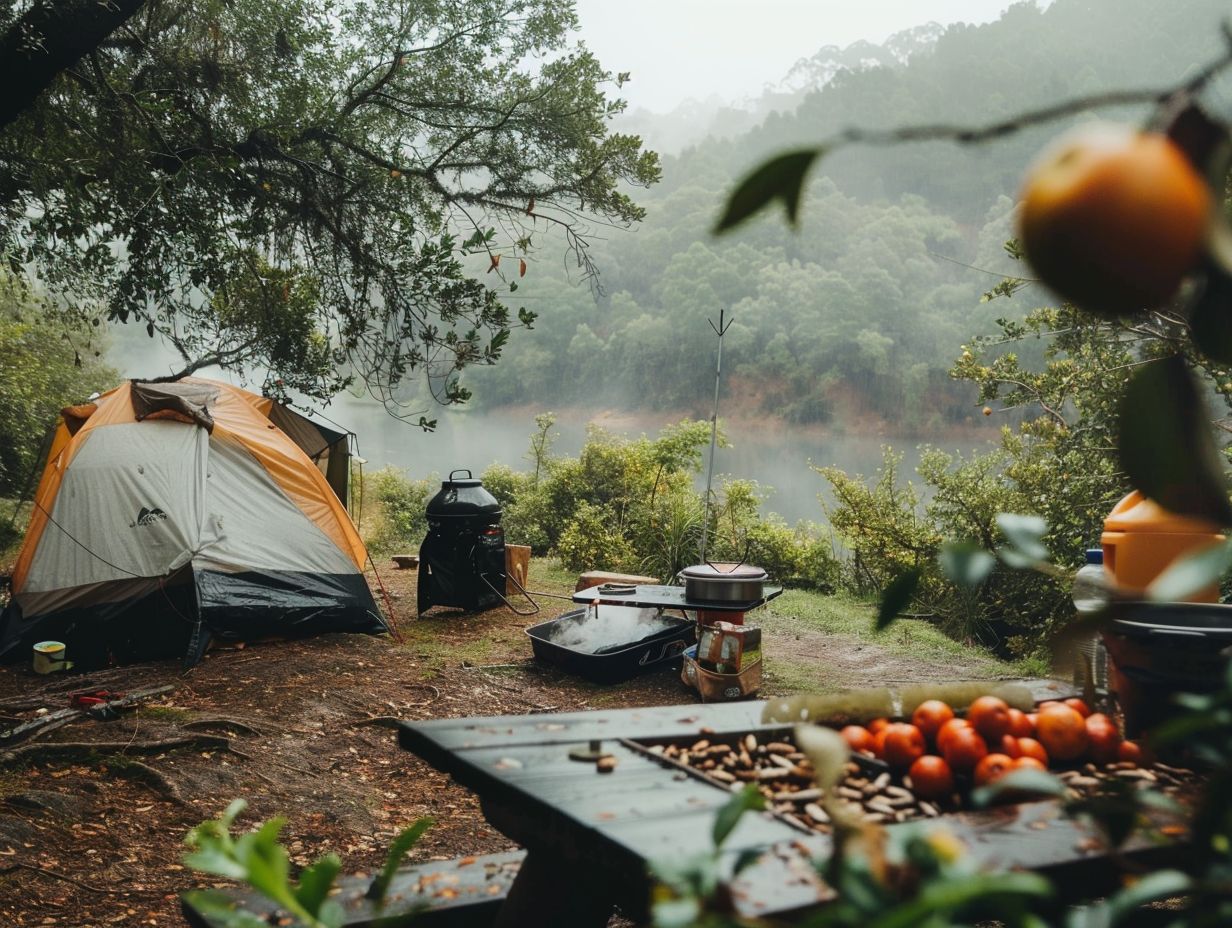
What are the best practices for storing food at a campsite?
A1: The best practices for food storage at a campsite include keeping food in airtight containers, storing it in a cooler with ice packs, and hanging food from a tree branch or storing it in a bear-proof container.
Why is it important to properly store food at a campsite?
A2: Properly storing food at a campsite is important for several reasons. It helps prevent attracting animals, such as bears, to the campsite, avoids food spoilage and contamination, and promotes overall cleanliness and hygiene.
Can I store food in my tent while camping?
A3: It is not recommended to store food in your tent while camping. Tents do not provide adequate protection from animals or insects and can also trap smells, attracting unwanted visitors to your sleeping area. It is best to keep all food outside of the tent in a secure location.
Should I bring a separate cooler for raw meat and other perishables?
A4: Yes, it is best to bring a separate cooler for raw meat and other perishables. This helps prevent cross-contamination and ensures that all food is stored at the proper temperature.
How should I dispose of food waste at a campsite?
A5: Food waste should be disposed of properly at a campsite. This can include burying it in a deep hole away from the campsite, packing it out in a designated garbage bag, or burning it in a fire (if allowed in the area).
Are there any foods that should not be stored at a campsite?
A6: Yes, there are certain foods that should not be stored at a campsite. These include highly fragrant or pungent foods, such as fish or strong-smelling cheeses, which can attract animals. It is also recommended to avoid storing large amounts of sugary or high-calorie foods that can also attract animals.
Share:
By submitting your email address, you are agreeing to receive marketing emails from theexpertcamper.co.uk.
We’ll never share your email address and you can unsubscribe at any time. Privacy policy
Related Posts

A Seasonal Guide To Hiking In The Peak District
Are you ready to lace up your hiking boots and explore the stunning landscapes of the Peak District? This seasonal guide will take you through

Hiking Challenges Preparing For Your First Ultrahike
Are you ready to take your hiking adventures to the next level? Ultra-hiking offers a unique combination of physical and mental challenges, breathtaking scenery, and
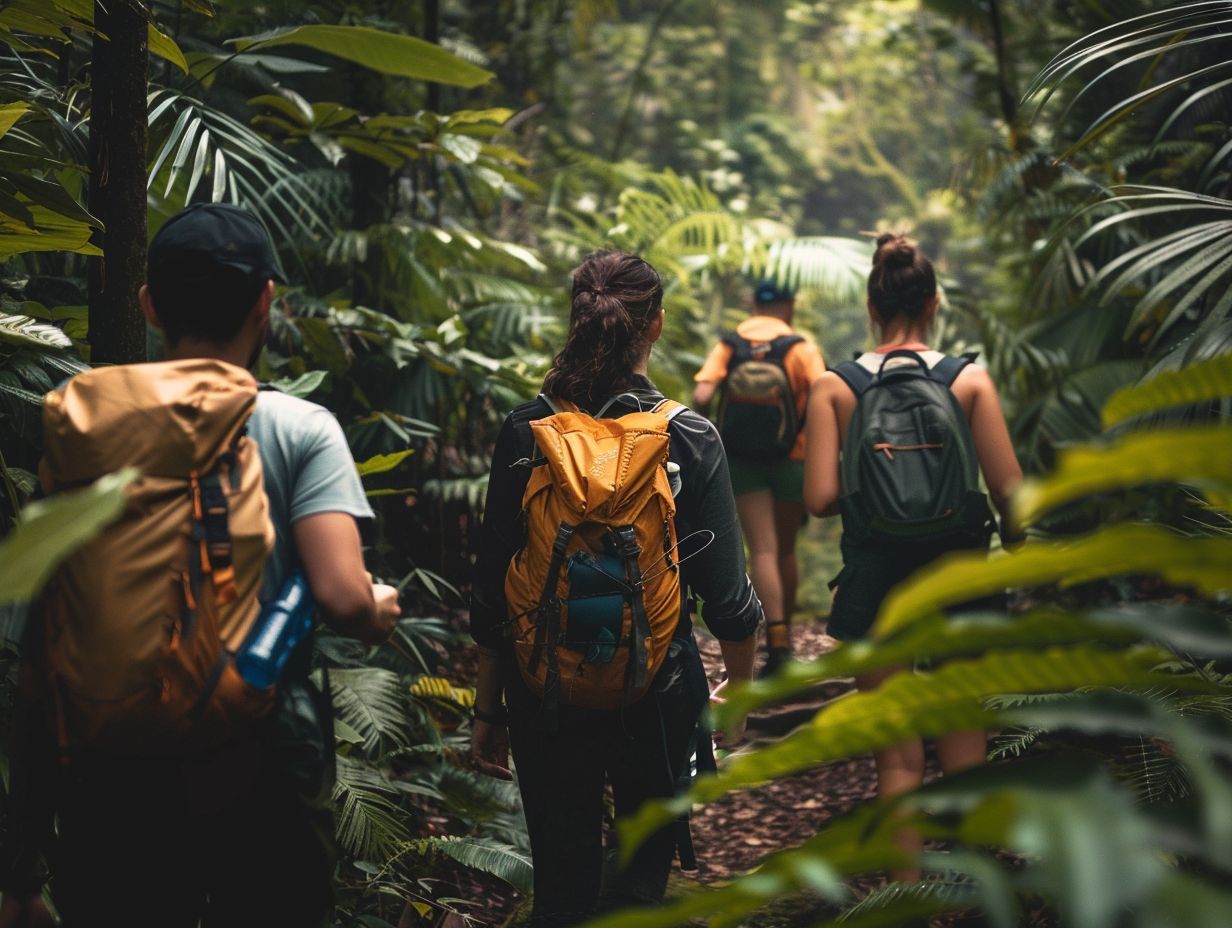
Ecofriendly Hiking Tips For Sustainable Adventures
Are you an outdoor enthusiast looking to minimise your impact on the environment while enjoying the great outdoors? Eco-friendly hiking is the perfect solution! We

The Best Hiking Trails For Experiencing UK Wildlife
When exploring the picturesque hiking trails of the UK, you can expect to encounter a diverse array of wildlife. From majestic birds soaring overhead to

Wildflower Walks The Best Trails For Nature Lovers
Are you a nature lover looking to embark on a wildflower walk? Explore the best trails for wildflower walks, including [Trail Name 1], [Trail Name



